Monday Dec 08, 2025
Monday Dec 08, 2025
Saturday, 30 January 2016 00:00 - - {{hitsCtrl.values.hits}}
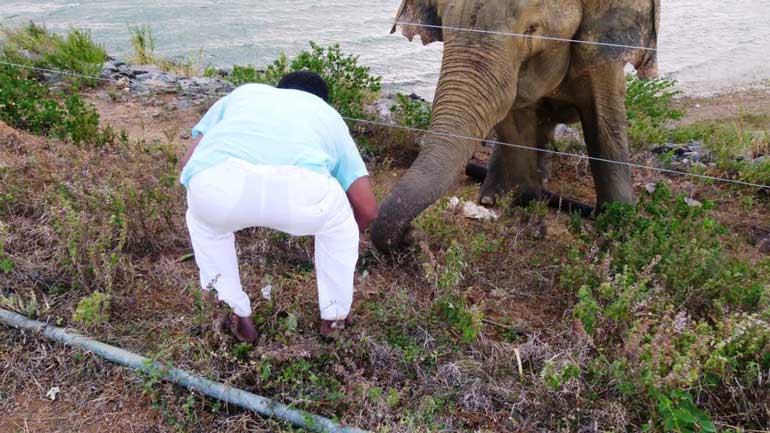
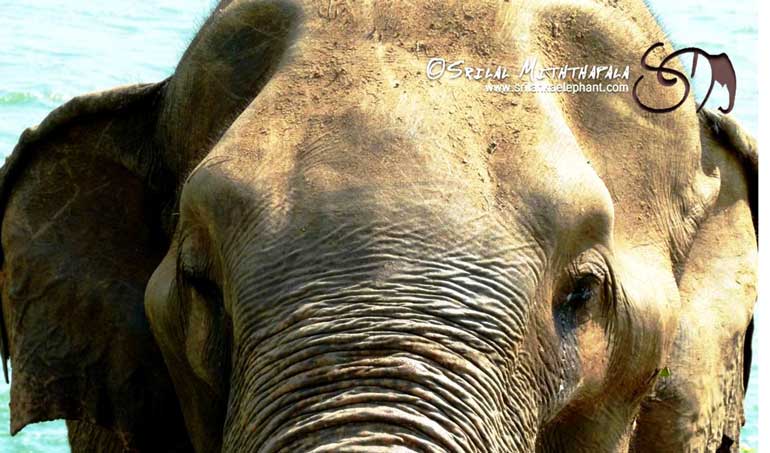
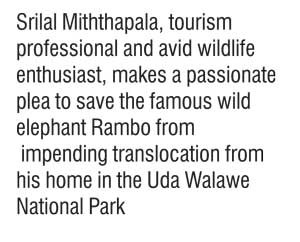
Many wildlife enthusiasts and Sri Lankans who travel around the country are familiar with the elephant named Rambo at Uda Walawe National Park, who has developed a close interactive behaviour with people over the years.
Rambo started frequenting the southern border of Uda Walawe National Park, bordering the Thimbulketiya-Tanamallvila road in the early 1990s. He was one of the first male elephants who started the habit of coming up to the electric fence and soliciting food and titbits from those passing by.
Over the years, people travelling got into the habit of buying sugar cane, watermelons and bananas from the vendors across the road, and feeding the elephants. The vendors also encouraged this, since it brought them some easy income. Being very intelligent animals, this positively reinforced the behaviour of the elephants, and very soon, there were about 20 elephants joining Rambo along this stretch of the road.
When the Department of Wildlife Conservation (DWC) realised that they could not properly enforce the no-feeding rule along the Tanamallwila roadside, they erected a second electric fence behind the existing one. A large amount of money was spent on this second deterrent barrier, which extends from the end of the reservoir bund, right up to the corner of the park boundary on the Tanamallwila road up to the 25th km post. This has proven to be quite successful, and today there are no elephants along this stretch of the road.
However, the authorities had not bargained for Rambo. Unable to indulge in his favourite past time, he now started swimming across the edge of the reservoir and got on to the steep embankment along the reservoir bund, to access the roadway (where there was only a single fence) to solicit food from vehicles passing by. He has continued this habit for over a decade now and is most docile to the extent that he can even be fed by hand. 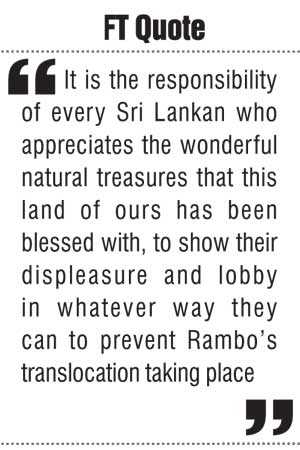
Of late, the DWC is reported to have tried to chase Rambo away from his favourite haunt, and had exploded thunder flashers at close quarters. Any elephant researcher will know that, being an intelligent animal, elephants cannot just be simply ‘chased away’ by using thunder flashes. If attempts are to be made to drive an elephant away, there must be a coordinated effort, with several teams working in close unison. It is a complex task, which requires careful planning.
As expected, this haphazard throwing of thunder flashers has frightened and agitated the otherwise placid and docile elephant, and somewhat changed his behaviour now.
Consequently, there is news now circulating that the DWC is planning to translocate Rambo away from the bund area. It is a well-known fact that translocation is not a solution for Human Elephant Conflict (HEC) and management.
Many researchers are of this view, and in a recent peer reviewed scientific paper entitled ‘Problem-Elephant Translocation: Translocating the Problem and the Elephant?’ authored by eminent scientists and elephant experts Prithiviraj Fernando, Peter Leimgruber, Tharaka Prasad and Jennifer Pastorini , it is stated that “Translocation caused wider propagation and intensification of HEC, and increased elephant mortality. We conclude that translocation defeats both HEC mitigation and elephant conservation goals.”
Be that as it may, there is one important and glaring observation that one needs to make here. All previous attempts of translocations were to remove so-called ‘problem elephants’ who were raiding crops. In this case, elephant Rambo has not set one foot outside the confines of the National Park. National Parks are areas which are designated areas for the protection and wellbeing of wild life by statute. The DWC seems to have forgotten that in National Parks, animals are the residents, and that we are the trespassers.
In fact at a recent wildlife discussion it was mentioned by elephant expert and author of many books, Jayantha Jayawardena that the DWC seems to have forgotten its primary mandate of safeguarding the animals, and is now focusing on safeguarding people instead!
It is therefore, ironical that this elephant is now to be ‘punished’, when he has done absolutely nothing wrong, and it is really the people who have encroached into his territory and have taught him to behave in this manner.
If Rambo is to be translocated, it will be virtually signing his death warrant. Being very intelligent animals that have strong home-range fidelity he will try to find his way back, and stumble across village hamlets, get shot at, and eventually succumb to his 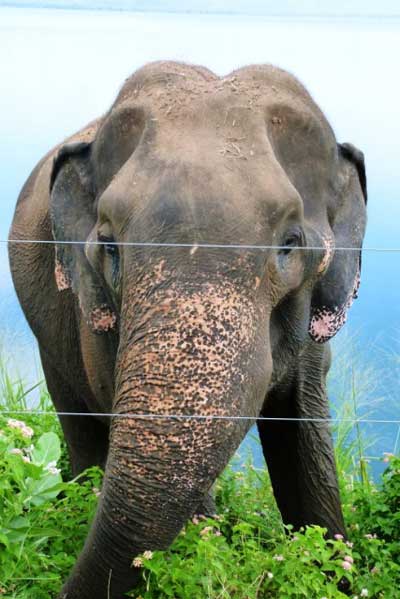 injuries, dying a slow, and possibly an agonising death in some far-away place.
injuries, dying a slow, and possibly an agonising death in some far-away place.
LTL Projects Ltd., Sri Lanka’s leading internationally acclaimed electrical engineering company, recently constructed and erected 12 boards along the bund of the Uda Walawe reservoir at the request of the DWC. These boards carry a clear message in both English and Sinhalese, advising people that feeding this elephant is a punishable offence. It was hoped that the DWC will then properly enforce the law, and punish people who feed the elephant (there is sufficient legislation in place under the DWC Act to prosecute those who behave in this manner).
However, no amount of notices are effective unless the rules are implemented. Today one can see passers-by feeding Rambo right by the side of the ‘do not feed’ boards.
Therefore, instead of trying to resolve the problem by removing the elephant, what the DWC should do is to firmly implement the existing rules and prevent people feeding these elephants. They could also easily construct a second electric fence behind the existing one on the bund, similar to what was done on the main Tanamalvila road boundary, which has been quite successful.
Rambo has created so much interest and publicity for Sri Lanka and tourism, much more than what we could have expected from any advertising campaign. Therefore, it is only morally and ethically correct that everything possible must be done to save this elephant from his impending fate.
It is indeed sad that we do not pay enough attention to such iconic individuals and make special efforts to safeguard them, instead of trying to destroy them. They are the ones who create the human interest stories, with their charismatic personalities. This in turn fuels public interest and opinion, and helps publicise and drawn attention to the plight that is befalling these gentle giants who roam this island of ours.
I am of the opinion that the DWC should now let Rambo be on the bund, where he has spent his last few years, rather than try to rehabilitate him back into the jungle by trying out various schemes. At this late stage of his life, it will only cause him stress and disruption to his daily routine. We taught him to ‘beg’ by acclimatising and habituating him to us humans.
He is happy and contented with life, watching the world go by, standing on the side of the bund, and still giving passers-by, a one-of-a-kind, unforgettable experience of seeing a wild elephant so close up. He has done his bit to create awareness about the plight of his kith and kin to the world, and I think we should manage this situation, learn from the mistakes, and let nature take its course with Rambo.
Therefore it is the responsibility of every Sri Lankan who appreciates the wonderful natural treasures that this land of ours has been blessed with, to show their displeasure and lobby in whatever way they can to prevent this translocation taking place.